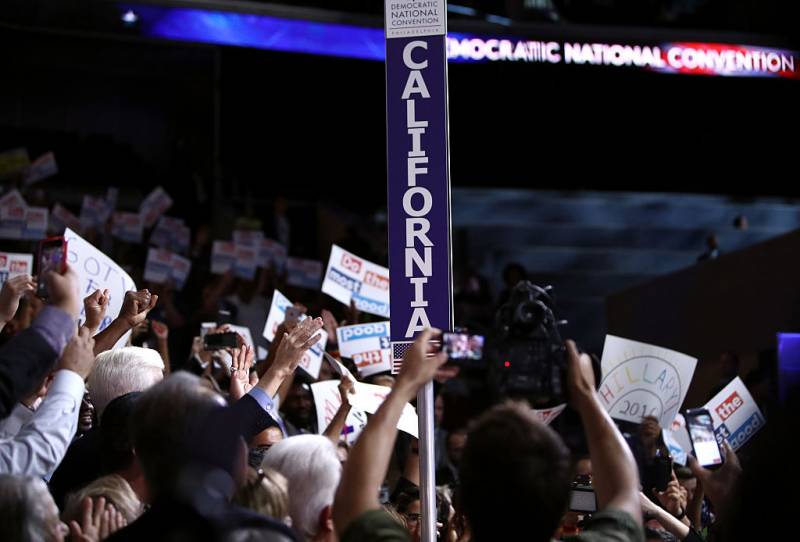The process of doling out the hundreds of Democratic delegates up for grabs in California’s presidential primary Tuesday is enough to make a mathematician’s head hurt.
First, some context.
To win the Democratic nomination on the first ballot — meaning a candidate gets to the convention in July with the votes needed to be nominated — a candidate needs to win just over 1,990 delegates by the time all the primaries are finished.
California alone has 415 “pledged delegates,” the most of any state by far. (There are also another 79 “unpledged,” or “superdelegates,” available, but we’ll get to that in a bit.)
After California, New York is next with 274 pledged delegates — so yes, we are the 800-pound gorilla here.
Those 415 delegates get split up in two different ways: by congressional district (271) and by statewide vote (144).
Before we get into the nitty gritty, check out this short video, from CalMatters, which does a nice job breaking it down.
Congressional District Delegates
The first is by congressional district. Each of California’s 53 congressinal districtss is allocated between four and seven delegates, depending on the district’s population and how many votes the Democratic nominee received there in the 2012 and 2016 presidential elections.
Only two Bay Area districts — the ones represented by House Speaker Nancy Pelosi, D-San Francisco, and Rep. Barbara Lee, D-Oakland — have seven delegates. The rest have between four and six. You can find the full list here (pages 13-15).
That amounts to a total of 271 district-level delegates up for grabs across California’s 53 districts. And to get any delegates from a given district, a candidate has to win at least 15% of the vote there.
Given that there will be millions of ballots left to count after Election Day, candidates hovering around the 15% threshold in any district will likely have to wait weeks to find out how many delegates they’ve potentially won. And again, any candidate who falls below the 15% threshold in that district gets nothing, freeing up the remaining delegates to be distributed to the other candidates.
Despite the days or weeks it will take to finish counting all the mail-in and provisional ballots, “we typically have a pretty good sense where most contests are headed on election night,” Secretary of State Alex Padilla said Thursday. “But it is still not unusual for the outcomes of the closest contests to change in the weeks after Election Day as final ballots are counted.”

